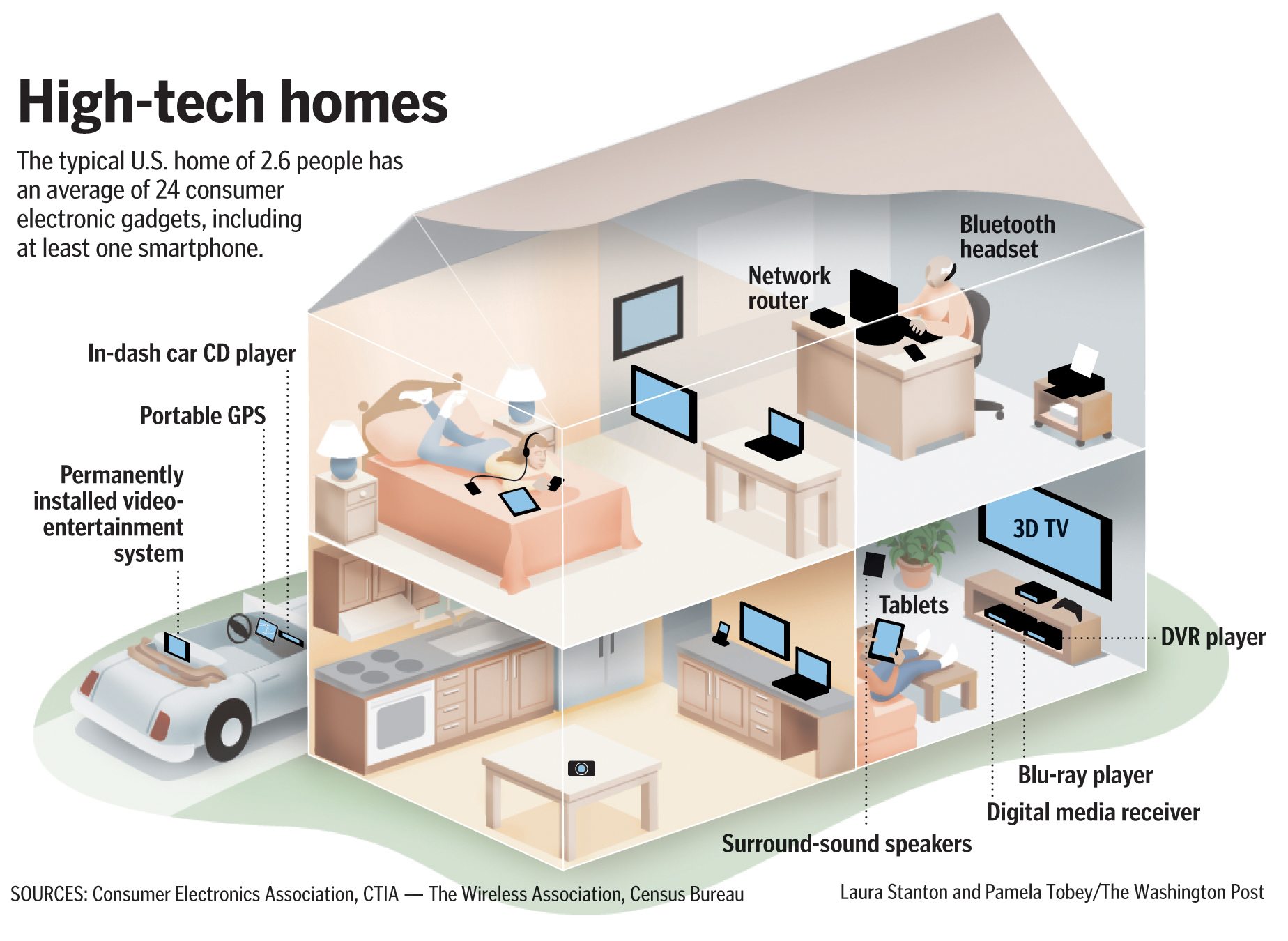The machines ARE taking over.
At least that’s the case with cellphones and other mobile devices, which for the first time outnumber human beings in the United States, the wireless trade group CTIA said Tuesday.
Precisely, there are 327.6 million active phones, tablets and laptops on cellular networks, up 9 percent from January. That compares with 315 million women, men, girls, boys and infants populating the country, including Puerto Rico, Guam and the Virgin Islands, CTIA said in its semiannual survey.
How is that possible? Are we double-fisting phones?
In many cases, yes.
Sylvia Aguilera has an iPhone for personal use and a BlackBerry as well as a Verizon Wireless laptop for work.
“I believe in a separation of church and state,” said the Round Hill, Va. resident. “My work doesn’t need to know who I am calling on my personal time.”
Bolstering the mobile mania: Children are getting cellphones at ever younger ages while seniors have begun to embrace the simplicity of tablets and smartphones, analysts say.
We have become a multigadget-toting society that is always connected to each other and to the Internet.
“It’s now an expectation to be mobile and connected to the Internet, and that expectation will only be stronger in the future,” said David Farber, a professor of computer science at Carnegie Mellon University and an early engineer of the Internet.
That attitude has prompted consumers to buy up the latest mobile gizmos despite an economic slump that is crimping spending in just about every other retail category.
Despite stubbornly high unemployment, Apple said this week that it took a record 1 million pre-orders in a single day for its latest iPhone. Revenues for the wireless industry grew 6 percent to $164.6 billion in the 12 months ended June 2011, according to CTIA. Tablets became the fastest-selling hardware device in history, smack in the middle of an economic slump.
It helps that gadgets are getting cheaper. Amazon unveiled a Kindle Fire tablet for $200, less than half that of the iPad, the original tablet. Cheaper devices are also hitting the market.
Indeed, in past periods of economic hardship, consumers said they would give up many things such as eating out, movies and new clothes. But they weren’t willing to give up television. Now, consumers view paid television services as expendable, analysts say. Time Warner Cable lost 130,000 television subscribers nationwide in the second quarter and Comcast lost 238,000.
But consumers won’t give up their mobile-phone contracts.
“The standard line was that people would rather shut off their refrigerator than their television set,” said Craig Moffett, an analyst at Sanford C. Bernstein. “Now, wireless is probably the service at the top of every list.”
Smartphones and basic phones make up the majority of mobile devices, while tablets make up less than 5 percent. But tablets are also fast-growing (sales are up 17 percent from last year) and are expected to supplant laptops in the future.
It’s now common to watch a sports event on TV while surfing the Web on a laptop or smartphone to check on Fantasy Football scores, according to Genevieve Bell, an anthropologist at Intel. That user may also be texting an order for pizza during the game while others in the room are tapping away at their phones or watching Netflix on a tablet.
Not that anyone seems to mind the digital deluge.
Art Upton of Northwood, Ohio, always has at least two devices strapped on his belt. His Android smartphone for “fun” and a BlackBerry for his job.
“Double-holstered, like the Old West,” he said.



